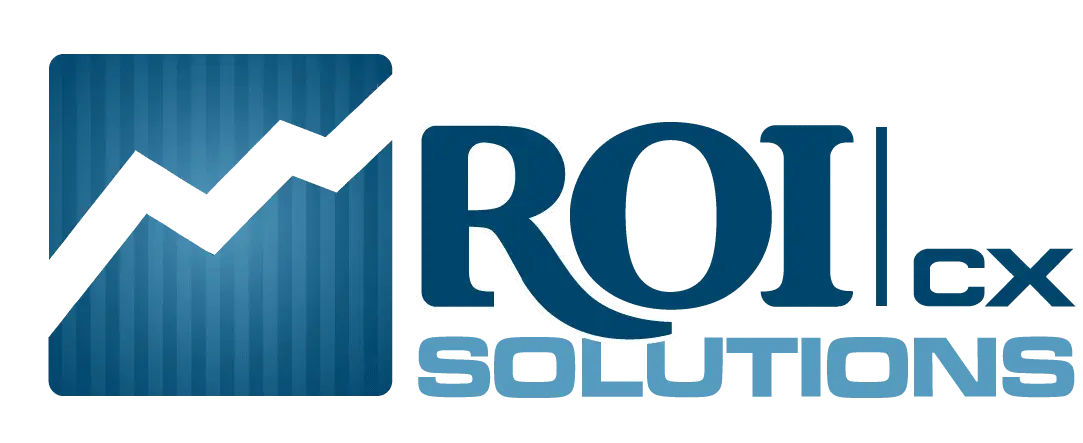Improving Call EfficiencyEfficiency: 20 Must-Know Tips You Can Implement Now
Not so fun fact: a survey of US customers revealed that nearly 66% of customers will hang up after just two minutes of waiting on hold.
Want to start your customer experience off on a bad foot?
Make your customers wait, either before or after they get connected with an agent. Unfortunately, getting put on hold is all too common in customer service—and much of this hold time comes down to a simple lack of call efficiency.
Agents have to put a customer on hold to look up key information that’s not readily available.
A call needs to be transferred to a different agent or department.
Call logging or verification processes are inefficient.
The list goes on, but the results are the same: dissatisfied customers that won’t return. That’s where we come in: in this article, our team of customer experience experts has pulled together 20 of our time-tested tips for assessing, improving and optimizing your call center efficiency so you can strengthen customer relationships, service and satisfaction.
Assessing Call Efficiency
To begin with, call centers need to understand their call efficiency before they can do something about it. The easiest way to do so?
Track KPIs related to call efficiency. KPIs—or Key Performance Indicators—allow you and your team to measure efficiency improvements over time, set goals and standard quality metrics, and understand what’s working and what isn’t as you strive to reach your goals.
But which KPIs should you be tracking to understand and monitor your current call efficiency? We recommend at least four:
- first call resolution (FCR), which measures the percentage of calls that are resolved during the first interaction (i.e. excluding calls that are transferred, require follow-up or aren’t resolved).
- average handle time (AHT), which measures the length of time a call takes to handle, including post-call work and tracking.
- customer satisfaction (CSAT), which measures, as the name suggests, the customer satisfaction after their call.
- average hold time, which measures the amount of time (or percentage of call time) spent on hold. A higher average hold time indicates inefficient processes and call handling, and typically denotes a need for more agent training.
These four KPIs can give you a holistic overview of your call handling process and efficiency, as well as how your call efficiency is impacting customer satisfaction. To ensure you’re measuring and assessing call efficiency accurately, follow these tips:
Use consistent metrics. Whichever metrics you use, make sure you’re tracking them both consistently over time, and in a consistent manner. For example, if some agents are tracking AHT as only the length of the call itself, and other agents are including pre- and post-call work, your metrics and data will be inaccurate and make it difficult to properly assess efficiency.
Get data analysis tools to help. Modern technology offers advanced analytics and AI-powered data analytics tools to provide deeper business insights with less time needed from your team. If your team doesn’t have the budget or resources internally to manage advanced data analytics and reporting, an outsourcing team can help analyze and optimize your call center processes.
Ready to take your business to the next level? Let our call center experts show you how we've helped organizations just like yours seamlessly scale while lowering costs and increasing efficiencies.
You won't regret it.
Understand the WHY behind efficiency problems. Tracking metrics and KPIs over time can help you understand the root of any efficiency problems so you can solve them effectively. For example, if your average handle time is excessive, but you can’t figure out why, tracking FCR and average hold time, as well as assessing agent training and call processes can provide needed insight on how to improve. Similarly, if there isn’t currently a problem, understanding call efficiency over time can help you identify and address any weakness and make improvements before a problem begins.
Optimizing Call Handling Processes
Once you’ve analyzed and understood your current call efficiency, you can begin to optimize your call center handling processes to improve your call efficiency.
Here’s our top five strategies for how to do so:
Streamline call routing and queuing. Improving call routing and queueing can tackle efficiency problems from a number of different angles—from reducing transfers (and thus, improving FCR rates), improving the customer experience (by getting them to the right agent faster), and overall improving efficiency.
Advanced call routing can also collect information directly from the customer as well as from your CRM database to automatically route callers to the appropriate department, and even to a specific agent who can answer their questions most efficiently.
Improve agent training and performance. Investing in your agents and agent training is directly correlated with performance and efficiency. Your agents are the ones handling calls and implementing processes, so the better training and more knowledgeable they are, the more efficient and effective their performance will be.
According to research from Zendesk, 62% of call center agents say that they need “more skills-based training to improve their performance.” As such, call centers who want to stay ahead of their competition and improve call efficiency and customer satisfaction should strongly consider how to optimize and increase agent training.
Use idle time effectively. Even with the best scheduling tools and estimates, you can’t completely eliminate downtime.
However, that doesn’t mean that idle time needs to be truly idle. Idle time can be used effectively by having agents review training materials, do call reporting or manage QA reviews, offer coaching and so on. Finding constructive ways to have agents use any downtime or idle time can improve call handling processes quickly, by making the best use of agents’ time both on and off calls.
Improve scripting to reduce call handle time. Simple scripts and clear guidelines for common customer complaints, problems and questions can greatly reduce average handle time and is an easy way to make your call handling process more effective. Rather than making your agents “start from scratch” with each call, common scripts built off of your best practices speeds up calls and resolutions—making things easier and more efficient for your call center and delivering more consistent solutions, faster, for your clients.
Automate what you can. Many call centers get hung up on tedious or repetitive agent tasks like call logging, updating customer data, tracking metrics, recording key call details, and so on. However, a lot of these tasks can now be automated—and when it comes to agent productivity and call efficiency, the more that can be automated, the more efficient you can typically be.
Using Technology to Improve Call Efficiency
Speaking of automation, eliminating repetitive tasks and tracking isn’t the only way technology can streamline your call center processes. Today, modern call center technologies provide a variety of ways to improve call efficiency before, during and after calls.
Implement call center software for call management and reporting. Call center software—whether it’s owned in-house or a CCaaS solution—provides numerous features for call management and reporting that can improve efficiency. For example, many modern call center softwares will track call metrics such as hold time, time in queue, abandonment rate and so on automatically, freeing up agent time and making it easier to track and report on operational metrics.
Make use of predictive analytics. Predictive analytics typically play a major role when it comes to customer behavior and marketing, but they can also be used internally at the call center to improve efficiency. For example, many call centers use predictive analytics to anticipate future call volumes based on historical data, seasonality, upcoming sales and marketing, product releases, and more. With more accurate forecasting, call centers can better predict staffing needs, ensuring there’s not too many or too few agents.
Incorporate AI and machine learning. AI and other machine learning technologies can be used in a variety of ways for efficiency in the call center—most importantly, for now, for call handling and routing. Advanced call routing systems use AI to analyze a customer’s data and provided information to understand the nature of the call, the department it should go to, and even the specific agent who is best suited to answer the question.
AI can also be used for handling calls and customer interactions, whether directly, through chatbots and other self-service options, or indirectly. For example, sentiment analysis tools use AI to analyze customer communications in real-time and provide the agent with emotional intelligence, suggested intentions, and more. These advanced analyses allow agents to answer queries faster while still maintaining a relational and empathetic touch.
Create omnichannel solutions. Omnichannel call center software improves efficiency and the customer experience by streamlining and connecting customer communications. If a customer called in yesterday, and emails today, the agent answering the email will be able to clearly see the details of yesterday’s call, the solution provided (or not), the customer’s preferences and data, and more.
All of this data not only streamlines the experience for the customer, making their journey seamless, but it also improves efficiency by allowing tickets to be resolved up to 40% faster and making communication processes more flexible and integrated across channels and teams.
Empowering Self-Service
Self-service obviously improves efficiency—after all, if a customer can get help themselves, it’s faster and requires less organizational resources. But is it really something customers appreciate?
According to HBR, 81% of consumers—across industries—will “attempt to take care of matters themselves before reaching out to a live representative” when they have a customer service concern or need. In addition, 75% of customers surveyed by Zendesk agreed that self-service is convenient for them.
So, yes, customers want self-service and it helps your team improve efficiency. It’s a win-win. Here’s a few strategies to use as you start to implement it.
Integrate chatbots with your customer service workflow. Chatbots can be an effective tool for answering common and simple customer service queries—not to mention a very efficient one. Consider some common customer service queries that can be easily resolved with a chatbot:
- starting a return or exchange
- tracking their order/delivery time
- resetting a password to an online account
- checking the balance on an account
- finding details on store hours or nearby locations
As AI continues to improve, having chatbots for customers to receive on-demand, 24/7 service will become more standard and expected. That is: if you aren’t already implementing chatbots, do so now to stay ahead of the curve. Chatbots can be channel-specific: implemented on your website, Facebook messenger, or directly into other channels and platforms. Any chatbot solution should also integrate seamlessly with your CRM and other data channels for reporting, quality assurance and providing omnichannel support for consumers.
Provide a variety of self-service options for common inquiries and tasks. Chatbots are not the only self-service solution available—FAQ pages, knowledge bases, help articles, online portals, video walkthroughs and demos can all be self-service options for customers. The key with self-service is to both reduce call volume and improve call efficiency. As customers find answers to their simple questions on their own, it reduces volume, but also frees up agents to focus on more complex and high-touch customer concerns.
Don’t forget about metrics for self-service. Tracking metrics and KPIs is just as important for self-service solutions as for other customer service channels—and it’s just as easy. For example, pageviews on a certain FAQ or knowledge base page can give insight into the number of “tickets,” or customers with a certain question. In addition, many companies implement a quick CSAT poll, typically framed as “Did this page answer your question?” one-click survey at the bottom of knowledge base articles.
Improving Call Efficiency through Customer Feedback
Finally, gathering, analyzing and implementing customer feedback is key to improving call efficiency over the long-term. There are many strategies that can gain you quick wins in the short-term—effective and practical—but to avoid hitting a wall six months in, you need to have a plan for continuous improvement and optimization.
Implementing customer feedback should be a big part of that plan. Here’s some strategies to do so effectively:
Collect the right customer feedback to identify areas for improvement. Collecting feedback randomly or haphazardly will only lead to haphazard results. Instead, focus on the feedback that will be most useful for improving. This might include both direct and indirect customer feedback, such as CSAT, CES, customer surveys, online reviews, and so on. Once the feedback is collected, analyze it carefully to identify common themes and action them for improvement.
Implement customer feedback into call handling processes and agent training. Customer feedback can inform call quality assurance processes, scripting and more. For example, if customers frequently provide feedback that your agents are not relatable or empathetic enough, you should revise your scripting to include more emotional, relational and empathetic language—or consider loosening your scripts to allow your agents to be more human in their conversations.
Your team should also consider using customer feedback in agent training, whether to provide feedback on role plays, allow agents to see how customers react to different scripts and solutions, or simply provide best practices to new agents. For example, agents could review calls in tandem with the customer feedback or survey results from those calls to understand what is effective for customer satisfaction. All of this can be collated to create more efficient processes that serve customers more effectively.
Make it an ongoing process. Obviously, improving call efficiency improves customer satisfaction in the long run. But using your customer’s feedback directly in your call center processes can kickstart this process. At the end of the day, keep in mind that this is not a “one-and-done” event. Your call center needs to have an ongoing QA process and a culture of continuous improvement to continue to provide excellent service in the face of changing customer needs.
Solicit agent feedback as well. Customer feedback is essential, but key feedback can also come from call center agents and managers. After all, they’re the ones on the front lines every day—talking to customers, using the software, and implementing processes and workflows. Gathering internal feedback on your operational and customer service processes can provide valuable data and ideas for improvements. In addition to increasing efficiency and customer satisfaction, regularly soliciting and implementing agent feedback can increase employee morale and lower attrition rates.
Conclusion
If all of this sounds like a lot to manage and implement—advanced technologies, continuous feedback loops and improvements, omnichannel support, data analysis—keep in mind that few organizations manage customer experience and service entirely on their own.
Working with an outsourcing partner can be an effortless and effective way to improve call efficiency, strengthen customer satisfaction and boost productivity. At ROI CX Solutions, we’re experts in customer service and have decades of experience working with clients to improve efficiency, boost service level requirements, eliminate customer service backlogs, and achieve gold-star standards when it comes to essential metrics like Average Handle Time and Speed of Answer.
Want to work with a customer service partner who provides exceptional customer experiences while also improving efficiency and other operational metrics? Connect with an expert from ROI CX Solutions today.






